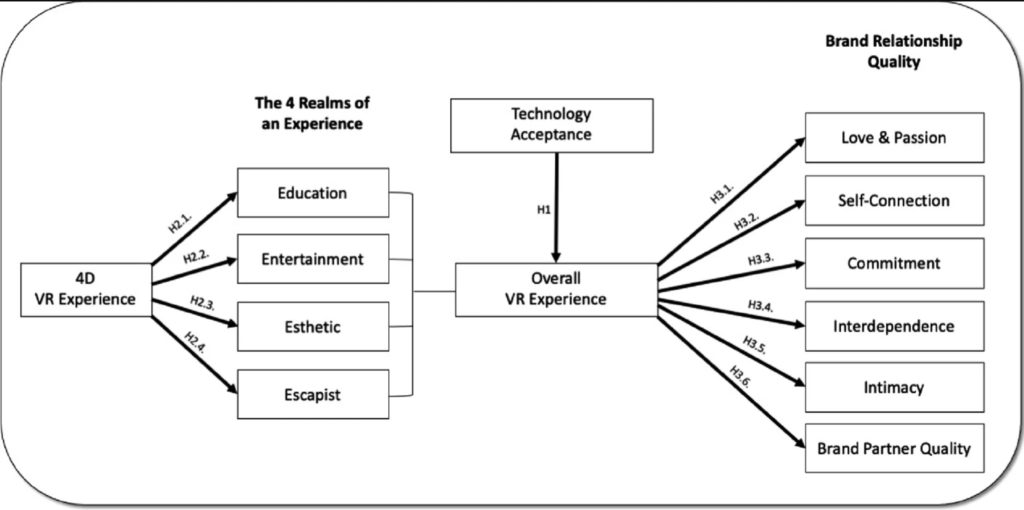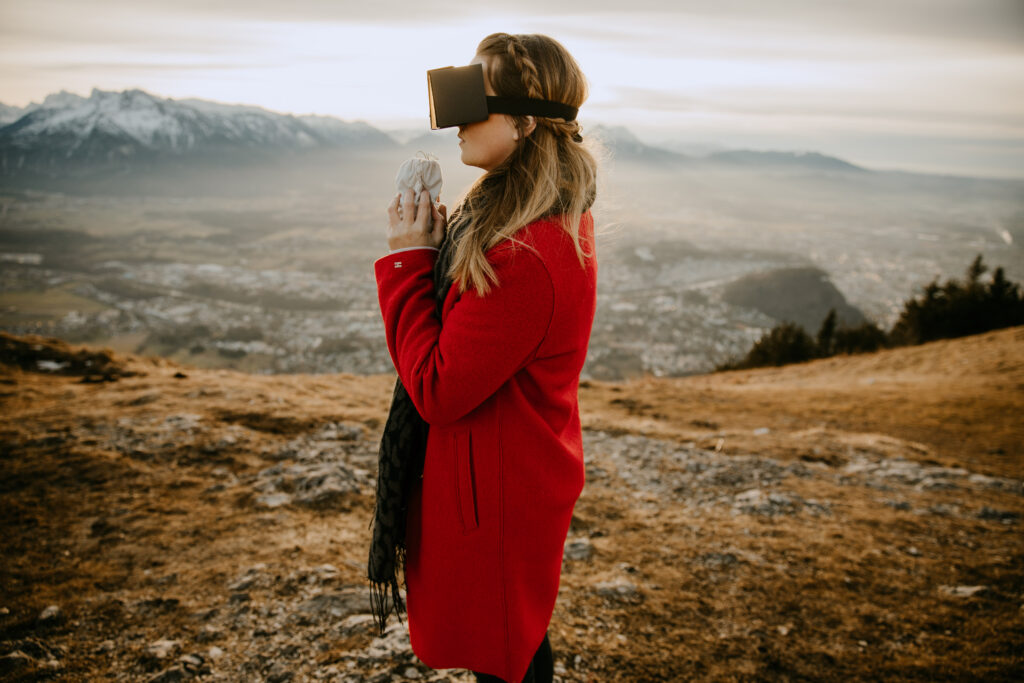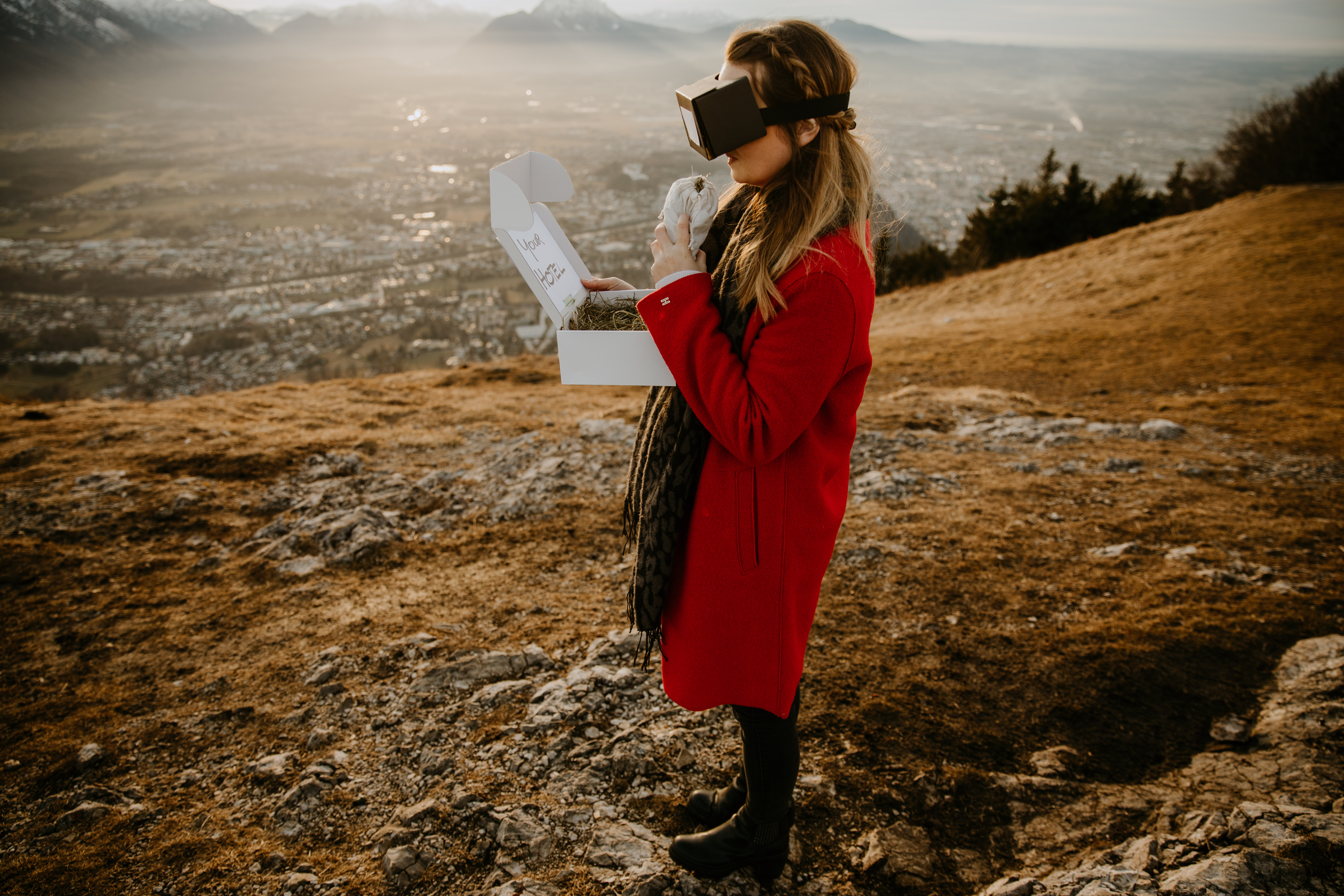The speedy development of information and communication technologies (ICTs) and the high level of consumer acceptance have made it increasingly difficult to retain loyal customers. Virtual Reality (VR) has become a solution that allows tourism providers to design technology-enhanced experiences in all stages of the customer journey. While most VR offers focus on pre-travel experiences, the potential of VR in the post-travel phase is still little explored. Therefore, in this study, the power of multisensory VR is being explored and aims to detect what effect the stimulation of different senses during the use of VR has on the overall experience and how this influences Brand Relationship Quality (BRQ).
Opportunities of VR for tourism
Attaining and maintaining loyal customers has become a increasingly complex challenge in today’s market. This can be linked to the widespread adaptation and acceptance of various ICTs, through which customers engage with the brand. VR is a developing sector of technological progress and is expected to revolutionize tourism experiences. It does so by providing extensive sensory information representing a source of education, entertainment, information, planning, heritage preservation, and accessibility and thus, improving customer experiences along the entire customer journey.
The evolution of VR is based on the desire of people to escape their physical space. This could be translated into related travel motives such as the urge to be temporarily able to leave one’s familiar surroundings. For this reason, virtual tours of destinations are gaining popularity for tourism marketing approaches. Simultaneosly they are changing how tourism services and products of the near future are promoted and consumed. Although VR activities in marketing are growing, the organizations who implementated VR as part of their marketing strategy are still few.
Multisensory VR Experience
Fully immersive virtual tourism experiences that trigger the user’s visual and potentially other senses (listening, feeling, smelling or tasting) can be created by isolating the user from the real world into a virtual environment. For tourism businesses, it is suggested to integrate at least two more senses in the use of VR. Instead of 3D VR, which is reduced to auditory and visual sensory stimuli, multisensory VR (4D VR) provides DMOs with an opportunity to present their services in a more engaging and immersive way.
The multisensory approach in the context of sight, hearing, touch, smell, and taste intensifies emotions and influences the overall VR experience. It does not only better appeal to the customer, but the combination also improves the perceived value, and encourages the consumer’s behaviour and decision-making process.
However, research into the potential of VR in the post-travel phase is still in its infancy. The post-travel phase is nevertheless of major interest: by triggering post-experience-related memories and relationships, tourism organizations aim for elevated quality of brand relationship. To achieve a higher level of Brand Relationship Quality (BRQ), VR experiences need to be authentic, personalised and relevant. Moreover, as multisensory tourism experiences contribute to memory formation, the multisensory extension of VR (4D VR) in post-travel experiences is of interest.
Research focus
This study takes an integrated approach, to examine not only VR in the post-travel phase, but also to assess the effect of technology acceptance and a multisensory VR experience on the levels of BRQ. The following research questions have been identified:
1. How does the user’s technology acceptance influence the overall VR experience?
2. How does the olfactory and haptic component influence the overall VR experience?
3. How does a multisensory VR experience in the post-travel phase affect the levels of Brand Relationship Quality towards a destination?
Methodology
Study context
To enable the quantitative field experiment by examining a DMO’s real use of VR, the tourism destination “Wagrain-Kleinarl” in the province of Salzburg (Austria) has been chosen as a case study region. To expand research on the use of VR in the post-travel phase, participants of the study have been guests who spent their vacations in the destination in the past. In the research process, study participants were recruited via the destination’s Facebook page which has more than 15,000 followers and Instagram channel with over 9,300 subscribers. Within one hour, the limited number of participants, willing to be part of the project, was achieved. In total, 100 guests of the destination agreed to participate in the field experiment.
To measure the experience dimensions within the virtual environment, Pine and Gilmore’s four realms of an experience, i.e. entertainment, educational, escapist and esthetic, have been adopted as items. Fournier’s construct of BRQ explored the six factors of brand partner quality regarding the traveller’s intimacy, commitment, self-connection, interdependence as well as love and passion towards the destination (See Figure 1).

.
Research design
All participants were randomly assigned to Group A, the experimental group, and Group B, the control group. Within the framework of a post-test-only control group design, both groups did not conduct a pre-test and underwent the same visual and auditory VR experience. The goal was to add a different intervention to only the experimental group, in this case, an olfactory (smell) and haptic (touch) component to the VR experience. Finally, an online questionnaire was utilized as a measurement tool.
For this study’s research design, a prototype of a multisensory VR experience, tailored to the destination’s corporate identity was sent together with a package to the guests’ homes. Both groups received a box, including a pair of VR cardboard glasses, detailed instructions on how to conduct the VR experience, a QR code leading to a tailored 360-degree-video hosted on YouTube and a second QR code guiding to the online survey (See Photo 1). The VR video was shot with an Insta360 in April 2021.

.
Within 3:18 min, the user experienced a sunrise above the destination of Wagrain-Kleinarl, a farm, a stable with two children playing in the hay, a mountain and lake scenery. In addition, the experimental group received the olfactory and haptic component of hay and herbs from the region as an intervention.
In the first step, the participants were instructed to sit down in a quiet place. The second step was to take the VR cardboard goggles out of the box and open the flap for the smartphone. After that, the participant scanned the QR code on the instructions, whereupon a video opened. After selecting the VR mode and turning the device to landscape, the user placed the smartphone in the goggles. Additionally, the experimental group was instructed to pick up the hay and take a deep breath. After both groups watched the same 360-degree-video in the goggles, the QR code for the online survey was scanned.
Findings
This study aimed to explore the effect of multisensory VR on the levels of BRQ in destination management. The results revealed that elevated levels of technology acceptance, consequently enhance the traveller’s overall VR experience. It was confirmed that the haptic and olfactory components positively influence the audio-visual VR experience in the area of escapism from the four realms of experience by Pine & Gilmore.
However, this research also clearly revealed that the additional sensory stimuli do not enhance the overall VR experience in the post-travel phase, although guests did feel more immersed in the virtual world. Thus, there is no different impact on the relationship between the guest and the region when more than audio-visual senses are engaged in a virtual reality experience. A possible reason for this could be that, in general, a VR experience in the post-travel phase is very novel to customers and thus this single factor of the multisensory component does not entail a significant difference on the BRQ.
Furthermore, limitations have been discovered, as the experiment did not take place in a laboratory setting under observation, unmediated confounding variables, such as noise, other odor influences or social presence from other individuals or subjects could have influenced the results.
For further research, it is suggested different measurement techniques, such as personal observations or post-experiment interviews to verify the results and to gain further insights into the traveller’s perception of multisensory VR in the post-travel phase. The same prototype could be tested to explore emotional arousal or booking intentions (pre-travel phase).
This study opened a novel research area by bridging multisensory VR experiences, post-travel experiences and BRQ. It expands the literature on 4D VR experiences and supports tourism practitioners in the implementation to strengthen the relationship between a destination and its guests.

So what about you? Are you ready to immerse yourself in the world of VR?
.
For more information about the study visit the website or read the article in PDF-file below:
To cite this article:
Prodinger, B., & Neuhofer, B. (2022). Multisensory VR Experiences in Destination Management. In ENTER22 e-Tourism Conference. Springer, Cham. pp. 162-173.
